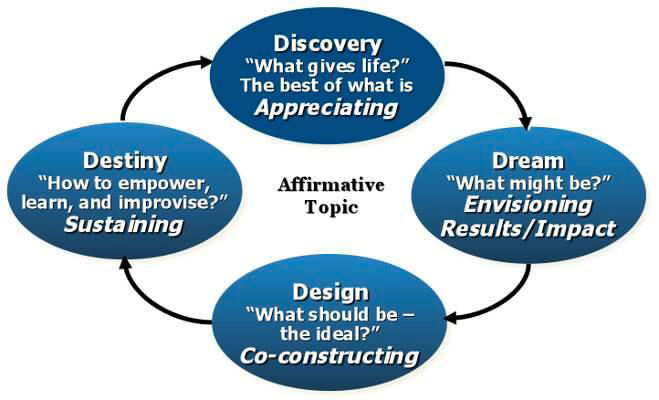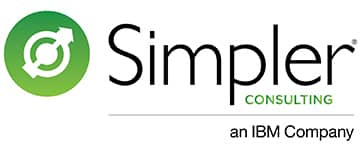
One approach to organizational change that can help everyone get on board is appreciative inquiry. Instead of focusing on the problems of the organization, “appreciative inquiry seeks to engage stakeholders in change,” says Gervase Bushe.
For Lean consulting and the resulting transformation to truly work, we must balance finding waste with the vision of how things could be and an aspiration to achieve greater things. We routinely celebrate things that have gone well, as well as the people who have done good work in our huddles.
I also find that people need to achieve something. Therefore, with large, expansive, and over-the-top goals, I always ask groups to illustrate the small things we can accomplish quickly, so that the group feels some momentum and reality to the change.
How appreciative inquiry works
Once the topic is chosen, there are four phases to appreciative inquiry.

Phase one: Discovery
In the discovery phase, participants ask questions to understand the strengths of their teams and organization. Participants focus on what is working within the organization and appreciating those processes.
For appreciative inquiry to work well, organizations need to get into the habit of celebrating successes and the team members who helped achieve those successes.
According to Collis & Hussey, 2013, here are potential questions to ask during the discovery phase:
- “What does XYZ company in our sector do exceptionally well?”
- “What’s making our team the best it can possibly be?”
- “What gives us life?
Phase two: Dream
In this phase, participants focus on “what might be” instead of “what are our problems.” Keeping the positive focus of appreciative inquiry helps participants stay engaged in improving the organization.
The dream phase enables participants to have rich dialogue about the future and to envision a 3- to 5-year plan for the organization.
Phase three: Design
Participants now ask positive, provocative questions with the aim of creating compelling, clear images of what could make the dreams possible. These use the present tense, so interview and probing questions should reflect this.
Phase four: Destiny
In this final phase of appreciative inquiry, we now ideally have images of a shared, positive future that leverages our organizational strengths. The Destiny stage is about encouraging shared commitment and discussing how teams and individuals will help bring provocative propositions to life. This can be seen as distinct from traditional approaches in its increased focus on collective meaningfulness and purpose.
The overarching question here, according to Cooperrider and Godwin (2011), is: “Howe to empower, learn, and improvise?”
Parallels with Lean consulting
Lean practitioners can see the parallel with Lean workshop phases. Discovery can sound like Current state, although we don’t always delve into current strengths. Then Dream sounds like Ideal state and Design sounds like Future state. Destiny is similar in some ways to the tests and countermeasures put in place to realize the workshop.



